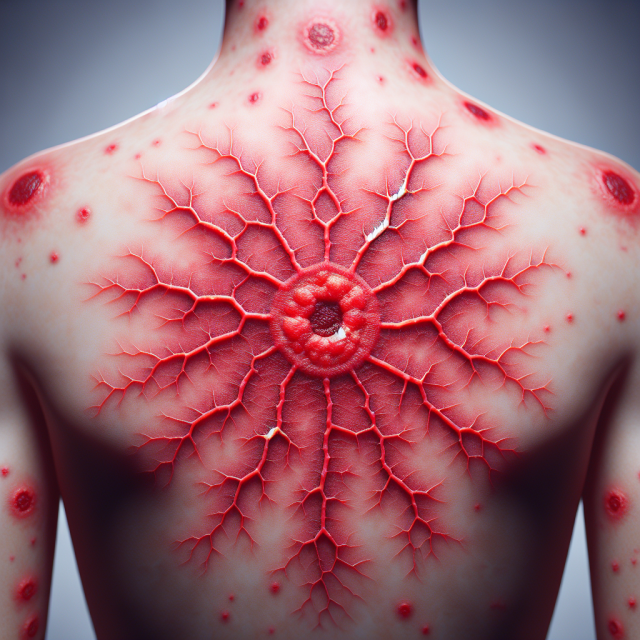
Lyme disease can feel like an invisible battle, often starting with one unmistakable sign: the rash. If you or a loved one has recently noticed a red, expanding rash after a tick bite, you might wonder, Is this Lyme disease? In this article, we’ll walk you through everything you need to know about the Lyme disease rash, from recognizing the symptoms to seeking treatment.
What is Lyme Disease?
Lyme disease is an infection caused by the bacterium Borrelia burgdorferi, transmitted to humans through tick bites, especially from black-legged or deer ticks. It’s known as a “silent illness” because its symptoms can sometimes go unnoticed, and in many cases, the first obvious sign is a rash.
Why Does Lyme Disease Cause a Rash?
When the bacteria enter the body, they trigger an immune response that leads to inflammation. The body reacts with an expanding red rash as white blood cells gather around the bite area to fight the infection. This rash, often called erythema migrans, is the first signal that the body is combating Lyme disease.
What Does a Lyme Disease Rash Look Like?
The rash can vary in appearance, making it tricky to identify. In many cases, it begins as a small red spot at the tick bite site, then expands outward to form a red circle or oval shape. This expanding ring can sometimes resemble a bull’s-eye with a clear center, but it can also appear as a solid red patch.
Different Stages of the Rash
The Lyme rash has multiple stages, and it can change in appearance over time. It usually appears within 3 to 30 days after a tick bite, but not all cases follow a predictable pattern.
Early Stage: The Classic “Bull’s-Eye” Rash
The early-stage rash is often what people associate with Lyme disease. The bull’s-eye rash is characterized by a red, round shape with a darker edge, resembling a target symbol. This pattern is more common in early Lyme and can be a helpful indicator to get medical help immediately.
Later Stages: How the Rash Can Change
As the disease progresses, the rash may change or even disappear. It might expand in size or become more diffuse and solid in color, losing the bull’s-eye pattern. In some cases, multiple rashes can appear on different parts of the body as the infection spreads.
Other Symptoms That May Appear
While the rash is often the first symptom, Lyme disease can lead to other signs, such as fever, chills, fatigue, headache, and muscle pain. These symptoms can mimic flu, so if you experience these alongside a rash, it’s essential to see a healthcare provider.
When to Seek Medical Attention
If you notice a rash after a tick bite, it’s best to consult a doctor immediately. Early intervention can prevent the spread of Lyme disease and reduce the chances of long-term complications. Don’t wait for other symptoms; the rash itself is enough reason to seek help.
Diagnosing Lyme Disease
Diagnosis usually involves reviewing symptoms, medical history, and recent tick exposure. Blood tests like the ELISA and Western blot tests can confirm Lyme disease, but these are most reliable in later stages, so initial diagnosis often depends on physical symptoms, especially the rash.
Treatment Options for Lyme Rash
Prompt treatment with antibiotics can clear up the rash and prevent Lyme disease from progressing. Doxycycline, amoxicillin, and cefuroxime are commonly prescribed antibiotics. Starting treatment early can lead to quicker recovery and prevent further symptoms from developing.
Medications for Lyme Disease
The main medications used to treat Lyme disease include doxycycline (often the first choice for adults and children over eight), amoxicillin (safe for children under eight and pregnant women), and cefuroxime. These medications are effective in treating the infection and preventing the disease from spreading.
Preventing Tick Bites
Preventing Lyme disease begins with avoiding tick bites. Wearing long sleeves, using insect repellent, and performing regular tick checks after outdoor activities can reduce the risk. Removing ticks promptly and safely can also prevent bacteria transmission.
Living with Lyme Disease
While most cases of Lyme resolve with treatment, some people experience lingering symptoms known as Post-Treatment Lyme Disease Syndrome (PTLDS). Fatigue, joint pain, and cognitive issues can persist. Staying informed and proactive about managing symptoms is essential for maintaining quality of life.
Support and Resources
Finding support is key to managing Lyme disease. Resources like the HealingWell Community offer valuable insights, support groups, and forums where patients and families can share experiences. Additionally, the CDC’s Lyme Disease Resources provides information and guidelines for managing the disease.
Conclusion
Recognizing a Lyme disease rash and seeking treatment quickly can make a world of difference in recovery. For patients and loved ones, understanding the symptoms, treatment options, and support resources can bring peace of mind and help guide the journey through this complex illness. By staying informed and connected, you can take control of your health and well-being.
FAQs
1. How soon does the Lyme disease rash appear after a tick bite?
The rash usually appears within 3 to 30 days after the bite, although timing can vary.
2. Does everyone with Lyme disease develop a rash?
No, not everyone with Lyme disease develops a rash, but it’s a common early symptom.
3. What should I do if I see a rash after a tick bite?
Consult a doctor immediately. Early treatment with antibiotics is effective in preventing further symptoms.
4. Can Lyme disease rash be treated at home?
While home remedies might relieve discomfort, antibiotics prescribed by a doctor are necessary to treat the infection.
5. What if the rash doesn’t look like a bull’s-eye?
A Lyme rash can vary in appearance. Any expanding rash after a tick bite should be checked by a healthcare provider.





